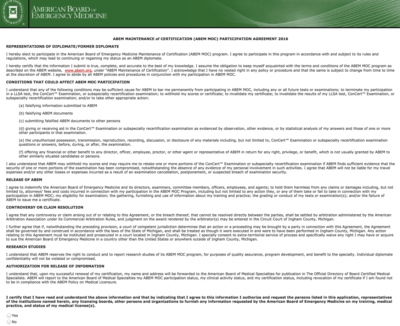Top Pain Scientist Fabricated Data in Studies, Hospital Says – WSJ.com
A prominent Massachusetts anesthesiologist allegedly fabricated 21 medical studies that claimed to show benefits from painkillers like Vioxx and Celebrex, according to the hospital where he worked.Baystate Medical Center, Springfield, Mass., said that its former chief of acute pain, Scott S. Reuben, had faked data used in the studies, which were published in several anesthesiology journals between 1996 and 2008.
Holy moly. Bad evidence is worse than none.
A guy who really reads the literature (Joe Lex from Temple in Philly) tells me that the major impediment to EBM is that most of the literature is crap. Here’s some verification of that.




Evidence-based medicine has its place, but I’ve honestly come to rely more on clinical experience as I get older.
Maybe it’s an adaption to where you are in your career. As young docs, our heads are stuffed full of literature, but we haven’t seen that many patients… so we lean heavily on that evidence-based medicine crutch to guide what we’re doing (and as a cudgel when we’re challenged on our management, particularly if we’re at all insecure about it). As you get older and you’ve seen your 10,000th care of CHF, ACS, or CP/roMI, you still practice standard-of-care medicine, but it’s less cookbook, more individualized, and tempered with the long clinical experience that says “maybe you don’t have to be quite that aggressive on this one…” or “I’ve seen too many PEs that fell outside these criteria, and this doesn’t smell right… I’m going to scan her anyway.”
Just a thought.
Poor experiment design is a far more common failing than data tampering. I get the feeling reading many of the studies that they suffered because most doctors chose medicine to avoid the math and statistics that are crucial to good experiment design. I also think that this is changing for the better with more recent work.
Always try to think of who’s benefiting from the study and/or who paid for it. Best to keep a slightly skeptical outlook and any study. “Lies, damned lies, and statistics”
PA
The evidence is crap because of interference from the pharma companies who promote the drugs in these studies. This would include paying or the data the pharma companies want to show, along with statistical gymnastics with the data available.
However, there are less biased evidence out there, which is better in many ways than guidelines, which are constructed by those drug companies who have product involved with the particular disease state related to the guidelines:
Upon information and belief, evidence-based medicine (EBM) is how health care providers practice medicine based on the efforts of evidence based researchers. These researchers consider EBM the apex for their approach as they conduct randomized controlled trials.
The health care providers assess the risks and benefits of how they choose to treat or not to treat their patients. This paradigm of a practicing fully utilizing EBM allows the health care provide to better predict the clinical outcomes from the ideal treatment options concluded according to EBM.
EBM implemented by health care providers recognize the need for improved quality in medicine. They also strive to place tremendous value on the restoration of the health of their patients- and they perceive the EBM approach to be the standard approach in their medical practices.
It is believed that there are three areas of evidence-based medicine:
1. Treat patients according to what is reasonable and necessary based on the evidence that exists regarding the treatment options health care providers select.
2. Health care providers review this evidence in order to judge and assess the best treatment for their patients.
3. Recognize that evidence-based medicine is in fact a movement that emphasizes the usefulness of this method to practice medicine.
A standard of care is created as a result.
It is also believed that there are two types of evidence-based medicine:
1. Evidence-based guidelines- Policies and regulations are produced to ensure optimal health care.
2. Evidence-based individual decision making- This is how restoring the health of others is practiced by the health care provider.
While critics claim that EBM is too restrictive in practicing medicine and treating patients, EBM seems to be the preferred way to practice medicine instead of relying on possibly biased medical guidelines. Rather than EBM being restrictive, it is in fact potentially improved by enhancements such as electronic health records.
Medical guidelines for a particular disease state are created from a combination of clinical studies in which conclusions are drawn to reflect national standards of care for a particular disease state. Guidelines were implemented during the 1980s as an alternative to relying on only EBM.
At times, these guidelines are privately sponsored by those profitable medical industries that are able to gain profit depending on what such guidelines state about treatment considerations. This makes guidelines, at times, unreliable due to bias, as they are without independent systematic review or quality considerations by others.
Unlike evidence-based medicine, guidelines can have major flaws and inaccuracies due to toxic factors such as commercial sponsorship received to create such guidelines. It is likely because of flaws such as this that most doctors do not follow medical guidelines, yet are rewarded and reimbursed by programs such as Medicare if they do follow medical guidelines that are established.
Dan Abshear